THE SINGERS TOOLKIT
An Incomplete Guide for Baffled Choral Singers
Letter Names and Intervals
Notes are given letter names from A - G, which are then repeated for many different notes. This is because notes of the same
letter name, although higher or lower, sound similar and go together (harmonise) well.
In this sound clip, you will hear a low A, a high A, and then them both together:
The distance between two notes is called an INTERVAL, counting the starting note as one then up (or down) to the next note:
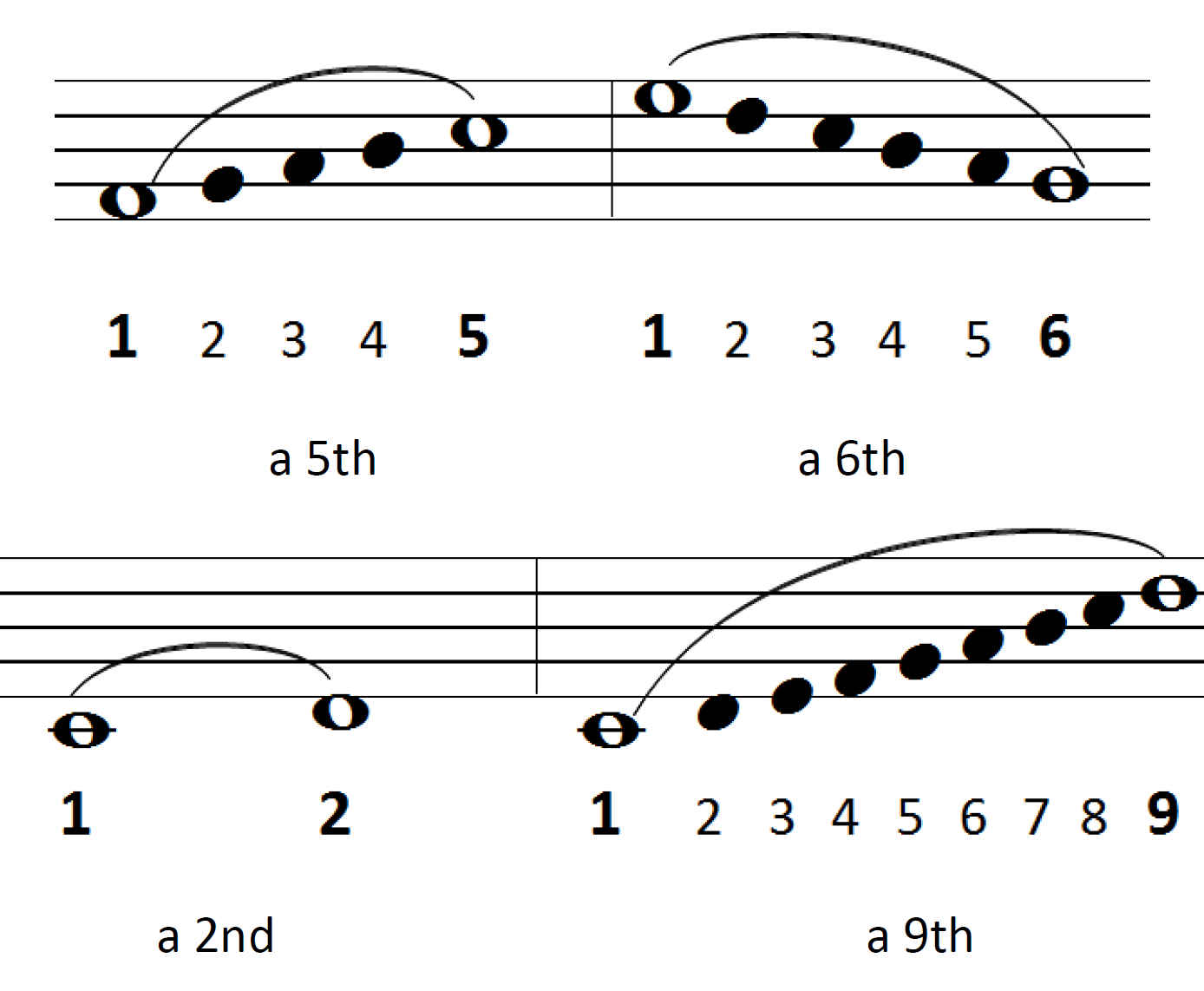 The interval between two notes with the same letter name is called an OCTAVE.
The interval between two notes with the same letter name is called an OCTAVE.
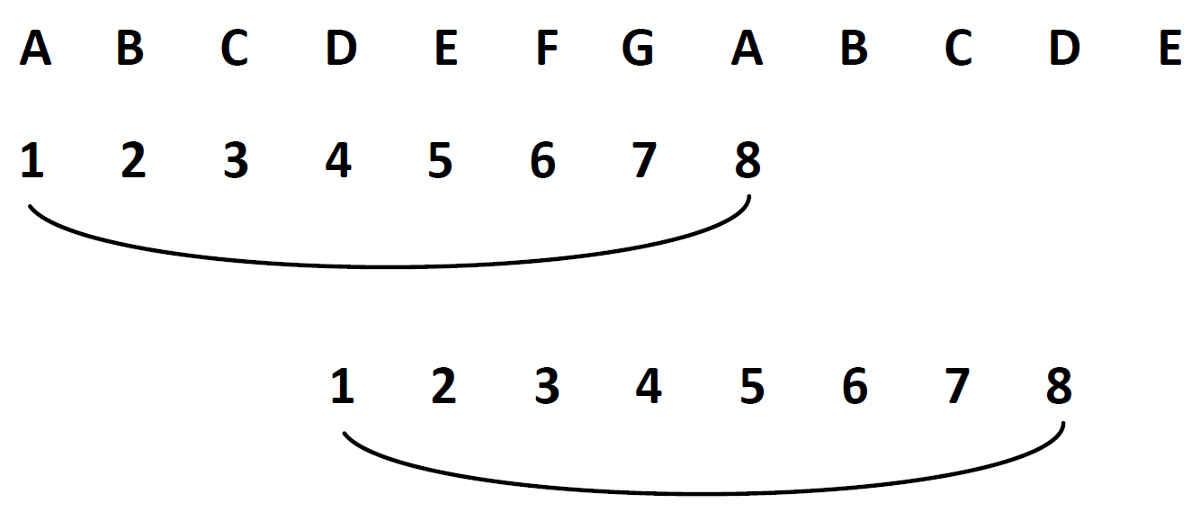
Find out more about intervals HERE, whether they are major or minor etc.
Return to:
TOP
MENU PAGE of Singers Toolkit
MENU PAGE of Organists Online
Clefs
CLEFS are used to define the letter names of the lines and spaces of the stave, and are placed at the beginning of each stave.
The most usual are
the TREBLE CLEF for high notes:
 and the BASS CLEF for low notes.
and the BASS CLEF for low notes.
 If you know the names of the spaces, it's easy to work out the names of the lines.
If you know the names of the spaces, it's easy to work out the names of the lines.
These two notes are at the same pitch and are known at MIDDLE C:
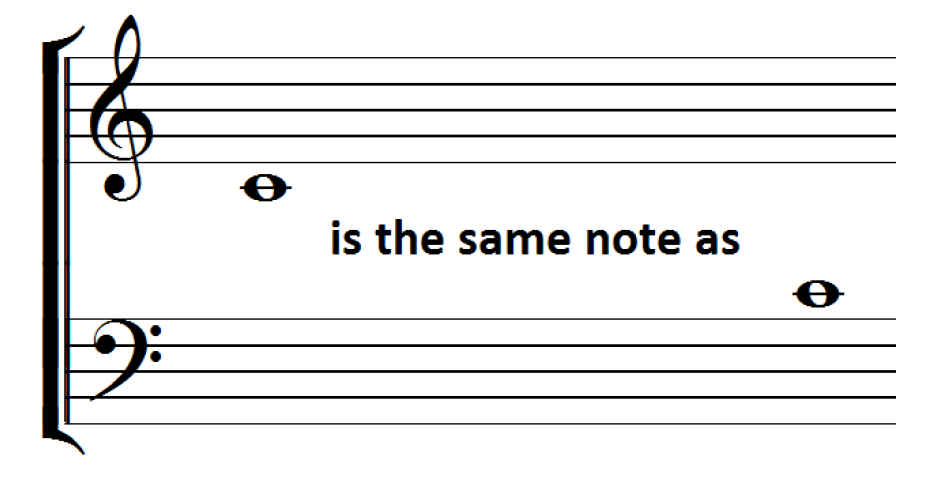
This VIDEO demonstrates the relationship between a treble and a bass clef.
With a 2-stave line, the Sopranos and Altos, sing from the Treble Clef and the Tenors and Basses
from the Bass Clef.
With a 4-stave line, it's not uncommon to use a Treble Clef for the Tenors, but everyone knows that they
sing an octave lower.
In this example, the little 8 beside the clef for the tenors reminds people that the tenors are singing an octave lower.

Return to:
TOP
MENU PAGE of Singers Toolkit
MENU PAGE of Organists Online
Sharps and Flats
The basic notes A - G are equivalent to the white notes on a piano keyboard:
 To get the equivalent of the black notes, we have to use ACCIDENTALS. That is, SHARPS (#) and FLATS (b):
To get the equivalent of the black notes, we have to use ACCIDENTALS. That is, SHARPS (#) and FLATS (b):
 A sharp RAISES a note by a SEMITONE (that is, moves it one key to the right on a keyboard):
A sharp RAISES a note by a SEMITONE (that is, moves it one key to the right on a keyboard):
 This sound clip demonstrates the four notes above:
This sound clip demonstrates the four notes above:
A flat LOWERS a note by a SEMITONE (moves it one key to the left).
 This sound clip demonstrates the four notes above:
This sound clip demonstrates the four notes above:
You will notice, for instance, that G# and Ab are the same note. We use both names, however,
to keep the music spelling and grammar correct. For example, although the following sounds correct,
you wouldn't write it:
Wen I hert mie nee, ei treyed not to kri.
Similarly, you can spell Fish as Ghoti (the gh from rough, the
o from women, and the ti from station), but it looks very strange.
Written music, similarly, has its own rules and conventions.
Just as G# and Ab, or D# and Eb are equivalent pairs, so are these:
 and
and
 The effect of an accidental lasts until the next barline, so:
The effect of an accidental lasts until the next barline, so:
 is equivalent to:
is equivalent to:
 Here is a sound clip:
Here is a sound clip:
accidental can be cancelled by using a Natural:
 Thus:
Thus:
 Compare the sound of this clip to the one above.
Compare the sound of this clip to the one above.
Return to:
TOP
MENU PAGE of Singers Toolkit
MENU PAGE of Organists Online
Key Signatures
If a piece uses the same accidentals many times, they are often gathered together at the beginning to form a KEY SIGNATURE.
These accidentals in the key signature AFFECT EVERY NOTE OF THE SAME LETTER NAME, unless cancelled by an accidental.
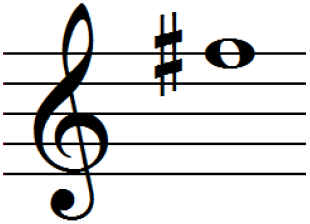 Every F, whether high or low, is sharpened.
Every F, whether high or low, is sharpened.
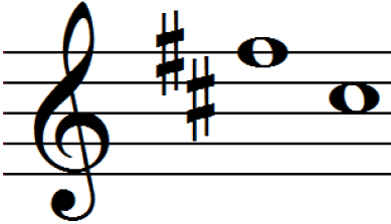 Every F and C, whether high or low, is sharpened.
Every F and C, whether high or low, is sharpened.
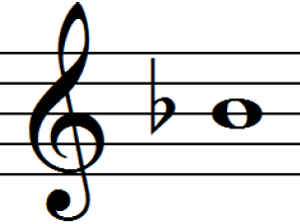 Every B, whether high or low, is flattened.
Every B, whether high or low, is flattened.
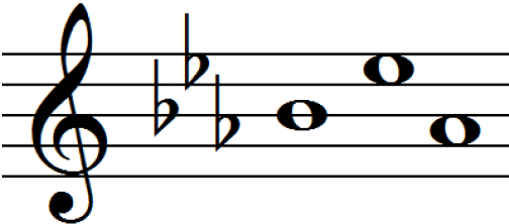 Every B, E and A, whether high or low, is flattened.
Every B, E and A, whether high or low, is flattened.
Here is VIDEO showing how a key signature works.
And here is another VIDEO showing how a key signature works.
You can find out more about Key Signatures HERE
Return to:
TOP
MENU PAGE of Singers Toolkit
MENU PAGE of Organists Online
Double Sharps and Flats
To meet the dictates of musical grammar, there are also DOUBLE SHARPS (which raise a note by two semitones) and DOUBLE FLATS (which lower a note by two semitones).

In this VIDEO the various types of accidental are demonstrated.
Return to:
TOP
MENU PAGE of Singers Toolkit
MENU PAGE of Organists Online